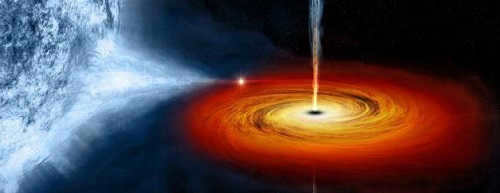
The enigmatic nature of a black hole, a collapsing star with immense gravitational pull, makes it a mysterious region in space. Scientists are constantly engaged in predicting the phenomena that occur within this cosmic phenomenon.
The outcome of theoretical investigations
Theoretical investigations validate that gravitational forces inside a black hole compress the dying star with a force that is directly proportional to its mass. Hence, it can be inferred that the most massive cluster of stars (8.0-100 MQ) will be impacted the most by gravity. The term MQ denotes the mass of the Sun, which is 2 x 10 27.
Indeed, red dwarfs emit infrared light and have a diameter of approximately one hundred thousand kilometers, white dwarfs have a diameter of around ten thousand kilometers, neutron stars measure between 20 and 30 km in diameter, and black holes, which are remnants of supermassive stars, have a diameter of only a few kilometers.
However, it is important to mention, in order to maintain accuracy, that these few kilometers represent more than just the size of a small and incredibly dense remnant of a star that had a mass greater than 8 MQ. Rather, it signifies the diameter of what is known as the Schwarzschild sphere, which encompasses a mysterious and immensely dense remnant star or supermassive black hole at its very core.
The Schwarzschild sphere serves as the boundary between the black hole and the Universe, and it was originally conceptualized by the renowned German astronomer and physicist, Karl Schwarzschild.
The intense gravitational pull around the sphere causes space and time to become highly curved and sealed off, preventing any particles or photons from escaping. This curvature of space-time effectively isolates this region from the rest of the universe. As a star approaches the end of its lifespan, its core reaches temperatures of approximately 3.5 billion Kelvin. Within this core, there is an abundance of iron and other elements. However, the iron furnace in the star’s core has exhausted its thermonuclear evolution, rendering it unable to generate any further energy from iron or its neighboring elements. Consequently, the star becomes entirely subject to the immense gravitational force, particularly within its luminous core.
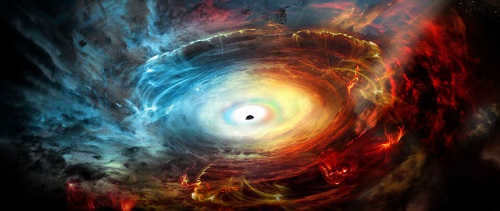
Similar to a massive, unseen arachnid, the remnants of the enormous gravitational force attract interstellar gas, dust, comets… All of these elements are drawn towards the spherical void as if it were a colossal abyss.
This void is peculiar in that it will never reach capacity, as the more matter that falls into it, the larger it becomes.
How would the Sun be affected within this void?
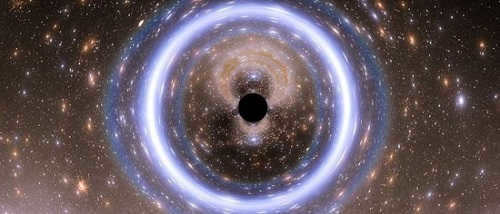
If a star is compressed to a radius of 5 km, it becomes so dense that nothing, not even light, can escape its gravitational pull. This phenomenon gave rise to the concept of a black hole, which is essentially an object from which nothing can escape. Black holes are shrouded in mystery, and to gain even a small understanding of them, we highly recommend watching the videos provided below.
When a star exhausts its nuclear fuel, thermonuclear reactions cease and the star begins to collapse under its own gravitational force. If the star has a sufficiently large mass, the core will shrink to the point where a black hole is formed. These objects possess an immense amount of mass in a relatively small volume, resulting in gravity so strong that even light cannot escape.
In the event that the Sun were to transform into such an entity, it would need to undergo compression to a radius measuring a mere 9 kilometers, while the Earth would need to be compressed to pea-sized proportions.
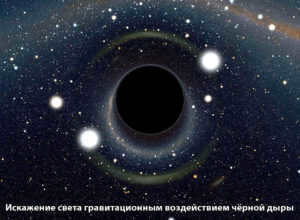

String theory enables the creation of minuscule black holes through the collision of two particles, such as protons. During the collision, the particles can become highly compressed, resulting in the formation of a microscopic black hole. However, these black holes have a negligible lifespan and pose no danger. The formation of these objects may have been influenced by the Big Bang, when the density of matter was extremely high. Nevertheless, the smaller black holes would have evaporated over time, losing mass through radiation and particle emissions. Only black holes with masses greater than 10 or 12 kilograms could have survived until the present day. These black holes would currently have a size comparable to that of a proton or neutron.
Black holes generate extraordinary gravitational fields, causing significant distortion of space and time in their vicinity.
The event horizon serves as the limit beyond which objects are unable to break free, regardless of their velocity. Within a brief span, the substance existing past the event horizon condenses into a singular point – a singularity.
Within a black hole, density and gravity reach infinite values. However, these characteristics pertain to the macrocosm, or the ordinary world. The microcosm, on the other hand, has yet to develop its own theory of gravity.
The Contents of a Black Hole
Scientists have determined that a singularity exists inside a black hole. Unfortunately, our current technology does not allow us to study these phenomena directly. Nonetheless, we do have a couple of intriguing videos available for your viewing pleasure 🙂
Curious tidbits
- Time flows at a slower pace in the vicinity of black holes compared to the surrounding areas. When observing an object being thrown into a black hole, its motion will gradually decelerate and its visibility will diminish. Eventually, it will come to a halt and vanish completely. However, if the observer were to jump into the black hole, they would instantly plummet towards its center, succumbing to the immense gravitational forces that would tear them apart. In their final moments, they would witness the entire lifespan of the universe, from its inception to its demise.
- One intriguing characteristic of black holes is that once the event horizon is crossed, the more fiercely one resists the gravitational pull and attempts to escape, the swifter their descent into the black hole becomes. It is a concept that is rather difficult to fathom, wouldn’t you agree?
- No matter the previous state of the body, once it undergoes compression, only three characteristics can be observed: electric charge, total mass, and momentum. The original properties of a black hole, such as its shape, color, and matter composition, cannot be determined.
- Anything that crosses the event horizon is inevitably pulled towards the center, where a singularity of infinite density resides. This is a location where the traditional laws of physics and our conventional understanding of space and time cease to be applicable.
- Stephen Hawking made a groundbreaking discovery regarding the evaporation of black holes. While it takes an incredibly long time for large black holes to completely evaporate (tens or hundreds of billions of years), microscopic black holes can evaporate in a fraction of a second. This process, known as Hawking radiation, is purely theoretical but has a solid theoretical basis. According to this theory, black holes that were formed during the birth of the Universe and have masses of 10^12 kg should have completely vaporized by now. As the size of the black hole decreases, the intensity of evaporation increases, eventually leading to an explosion. However, astronomers have not yet observed such explosions.
- The classical theory of gravity suggests that a black hole cannot be reduced or destroyed, only grow larger. This means that any information trapped inside a black hole is inaccessible to an external observer.
Supermassive black holes
Black holes exist at the center of every galaxy, including our own. This conclusion is drawn from the study of interstellar gas and nearby stars. The calculations indicate that objects at the center of galaxies should possess immense masses despite their small sizes. Therefore, it can be inferred that the center of every galaxy harbors a black hole, with masses ranging from millions to billions of solar masses. The black holes observed in stellar systems typically have masses ranging from 4 to 16 solar masses.
Over the course of 12 billion years, it is estimated that our galaxy has produced millions of incredibly dense objects known as supergiant black holes. While astronomical observations have provided evidence of their existence, the exact mechanisms by which these black holes form remain a mystery.
Collisions of black holes
Various signals, such as star vibrations or other types, can be transformed into sound. This is what the sound produced by the merging of two black holes resembles:
Methods for detection
Detecting a black hole is feasible when it is part of a binary system. For instance, in such a system, if one of the stars goes supernova and explodes, it will be influenced by the gravitational force of its neighboring star. As a result, matter from the star will flow into the black hole, essentially causing it to consume the star.
The material ejected from the star will undergo a spiraling motion around the black hole, leading to its intense compression and heating. This heating process will persist until the emission of X-ray waves, which can provide insights into the properties of the object. Additionally, the gravitational pull of a black hole passing by a star will cause a deviation from its regular trajectory, thereby exposing the presence of the black hole. Theoretical calculations suggest the existence of black holes without a companion star.
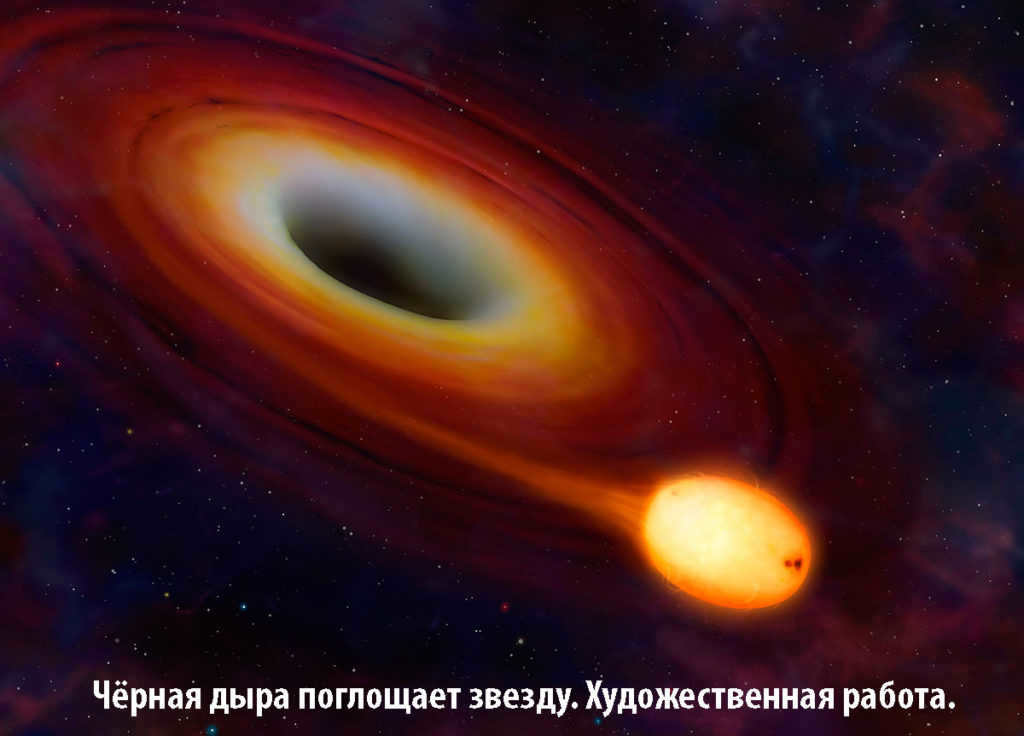
Methods of studying black holes
The study of black holes primarily relies on mathematical modeling and the principles of physics. When the proposed theories align with empirical observations and do not contradict established scientific principles, they are accepted as valid explanations. The following video provides a comprehensive discussion on this topic:
Back in the 18th century, English geologist John Michell introduced the concept of black holes in the universe. He proposed that stars with a density similar to the Sun, but 500 times smaller in size, would have a first cosmic velocity greater than the speed of light. This implies that if the law of universal gravitation applies to light, then light would be unable to escape the surface of such a star, rendering it completely black from an external perspective.
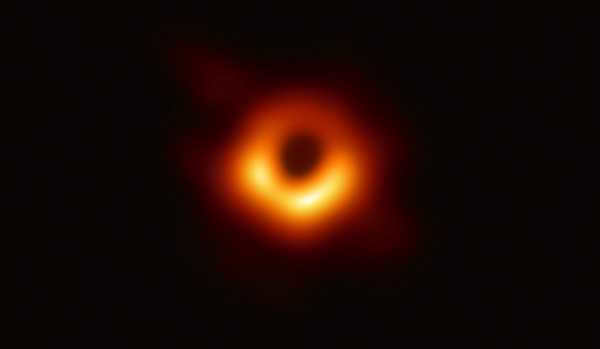
The initial visual depiction of a supermassive black hole and its silhouette at the core of the M87 galaxy
The immense fascination with the concept of “all-devouring” stars in the cosmos somewhat diminished when scientists made the discovery that light is a form of electromagnetic radiation, and thus, gravitational forces should not have an effect on it. Convinced by this argument, the renowned 18th-century scientist Pierre-Simon Laplace chose not to include information about excessively massive cosmic entities in his book “The World System,” entities that possess such immense gravity that even light rays are unable to escape their boundaries.
Distortion of the space-time continuum in four dimensions
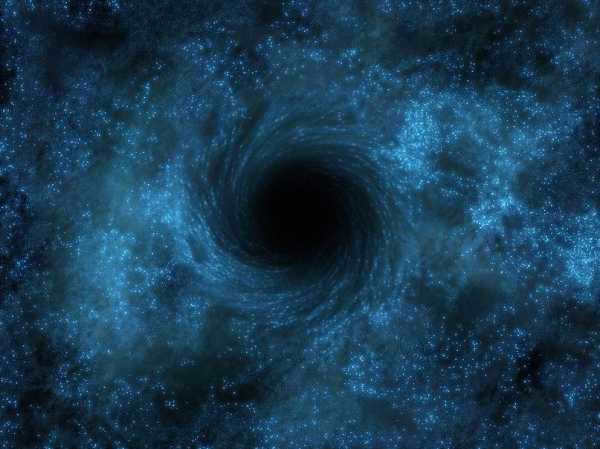

An artistic depiction of a black hole
A renewed fascination with these enigmatic celestial entities has emerged following the introduction of David Hilbert and Albert Einstein’s general theory of relativity. This theory posits that the gravitational field is a curvature of the four-dimensional space-time continuum and that light cannot travel in a straight line within it. Instead, it is believed that light may be confined within a closed region, creating what is known as a black hole. However, not all aspects of this theory have been empirically verified…
Concentric rings encircling an imperceptible celestial body.
Deep within the depths of a mysterious black hole.
In the distant past, the esteemed astrophysicist Kip Thorne proposed the intriguing notion that around enigmatic entities known as black holes, concentric rings resembling a radiant rainbow halo may manifest. This captivating phenomenon occurs when a beam of light, enticed by the gravitational force, ventures close enough to be influenced by its pull, yet remains far enough to elude eternal capture – allowing it to circumnavigate the black hole for a finite duration and emit a faint glow. However, the observation of this extraordinary spectacle necessitates the proximity of the black hole and the presence of a brilliant celestial body situated beyond it.
There is a higher probability that they do exist rather than not, however, at this point in time, it is impossible to provide conclusive evidence of their presence
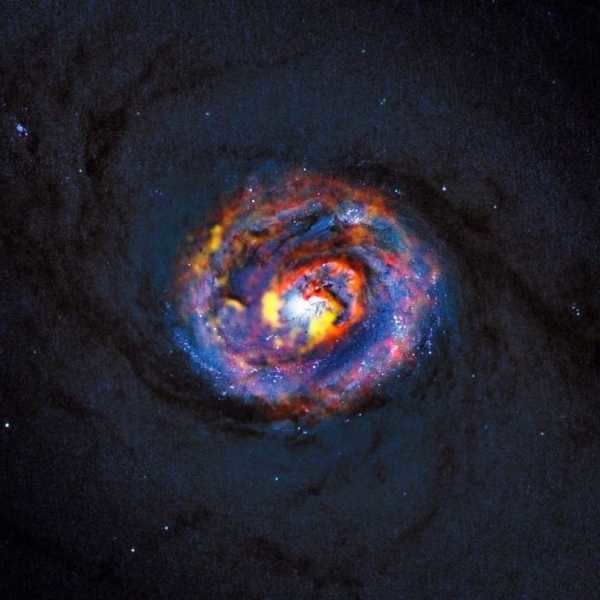
A composite image of NGC 1433, a galaxy with a black hole at its center.
Contemporary astrophysicists postulate that inside a black hole, time comes to a halt and space bends, though verifying this is no simple task, just as confirming the actual existence of black holes themselves proves challenging. Due to their complete lack of emissions, black holes cannot be directly observed.
A computer simulation demonstrating the visual perception of an individual who has fallen into a black hole.
Presently, there is little doubt regarding the presence of black holes in the universe. However, determining who first discovered these entities or provided evidence that the studied celestial object is indeed a black hole remains an unsolvable mystery.
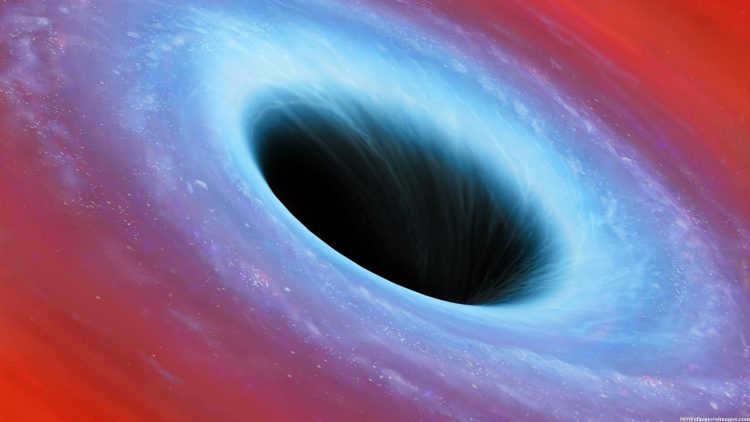
- Astronomical objects
Black holes are possibly the most enigmatic entities in the cosmos. Unless, of course, there exist entities hidden somewhere in the depths that we are unaware of and cannot fathom, which seems improbable. Black holes are immense amounts of mass and density squeezed into a minuscule point of small radius. The physical characteristics of these entities are so peculiar that they perplex even the most sophisticated physicists and astrophysicists. Sabine Hossfender, a theoretical physicist, has compiled a collection of ten pieces of information about black holes that everyone ought to be acquainted with.
What is the definition of a black hole?
The distinguishing characteristic of a black hole is its boundary known as the horizon, which marks the point of no return for any matter or light. When a region is permanently separated, it is referred to as an “event horizon”. If the separation is only temporary, it is called an “apparent horizon”. However, this temporary separation can span a significantly longer period than the age of the universe. When a black hole’s horizon is both temporary and long-lasting, the distinction between the two becomes indistinct.
What is the maximum size that black holes can reach?
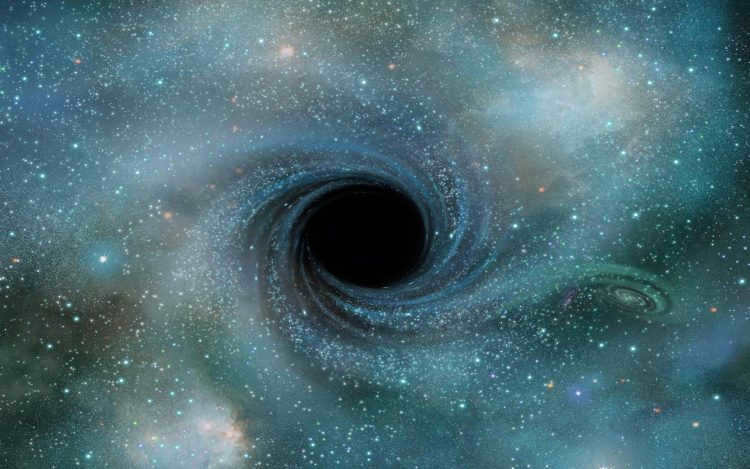
There are black holes that are as small as a big city, while others are so massive that they are beyond comparison. A recent video by Harry Evett explores the scale of black holes discovered in 2018.
This year, scientists have successfully captured images of the area surrounding a black hole using the ALMA telescope. The black hole is situated in the active nucleus of the M77 galaxy, and the researchers were able to measure the diameter of the gas and dust ring that surrounds it. Although the black hole itself is not visible in the images, it is expected that future advancements may allow us to observe the accretion disk and the matter ring surrounding it. These structures are visible due to the release of electromagnetic radiation caused by particles moving at subrelativistic speeds. It is hoped that this year we may also obtain a picture of the neighborhood of Sagittarius A*, the black hole at the center of our galaxy. Currently, our knowledge of black holes is based on artistic representations, as we are unable to directly observe them. However, we do have information regarding their mass and size, which is difficult to comprehend due to their immense scale. To gain a better understanding of the size of black holes, a new video has been released that provides a rough visualization of their magnitude.
The size of certain black holes can be compared to that of a large city, such as London, while their weight can be equivalent to five thousand suns. On the other hand, some black holes may have a radius similar to that of the Earth, but their mass is five million times greater than our planet’s. Regarding the Sun, the lightest black holes known are only five times more massive than our star, yet they are 100,000 times more compact. Although the black hole at the center of the Milky Way is quite heavy, it is not a record-breaker in terms of mass or size, even though it weighs as much as 4 million Suns. It pales in comparison to the black hole at the center of the Messier 60 galaxy, which has a mass of 4.5 billion solar masses. This is where the class of ultramassive black holes begins, with the largest ones making 4.5 billion Suns appear insignificant. The largest and most massive black hole known is located in the quasar TON 618, with a mass of 66 billion solar masses. To grasp the enormity of the Universe, you can explore our collection of videos on the vastness of space.
What occurs at the boundary?
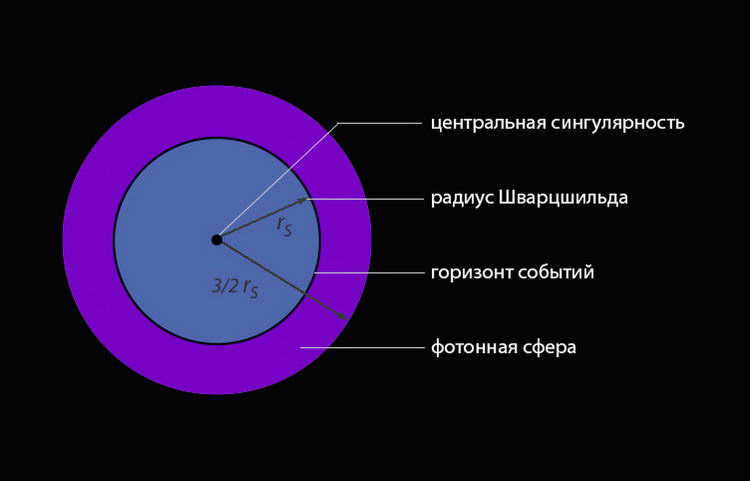
When you pass the boundary, not much changes in your surroundings. This is all thanks to Einstein’s equivalence principle, which suggests that there is no discernible difference between acceleration in a flat space and the gravitational field that causes the curvature of space. However, an observer situated far from the black hole, who is observing someone else falling into it, will notice that the person’s movement gradually slows down as they approach the boundary. It would seem as if time moves slower close to the boundary compared to further away. Nevertheless, after some time, the observer falling into the black hole will cross the boundary and find themselves within the Schwarzschild radius.
The experience one has at the horizon is dependent on the tidal forces generated by the gravitational field. The strength of these tidal forces is inversely proportional to the square of the black hole’s mass. Therefore, as the mass of the black hole increases, the tidal forces decrease. In fact, if the black hole is sufficiently massive, one may cross the horizon without even noticing any significant changes. Physicists refer to the stretching effect caused by these tidal forces as “spaghettification.”
In the early stages of the general theory of relativity, it was initially believed that a singularity existed at the horizon. However, subsequent research has revealed that this is not the case.
Speculating on the Contents of a Black Hole
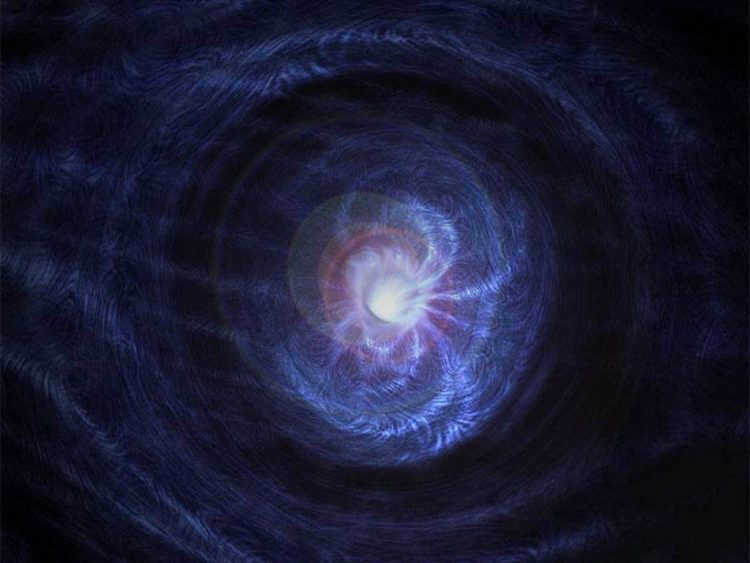
According to some mathematicians, these enigmatic entities in the cosmos may contain wormholes, also known as space-time tunnels, which serve as gateways to other universes. This idea has captivated the imaginations of many writers and filmmakers. However, the prevailing belief among astronomers is that inter-universe tunnels do not exist. Furthermore, even if they did, the inner workings of a black hole remain a mystery to humans.
Another concept suggests that there could be white holes at the opposite end of these tunnels, through which vast amounts of energy flow from our universe to another realm via black holes. Nevertheless, the current state of science and technology renders any form of travel through these tunnels impossible.
There are various explanations regarding the emergence of black holes, categorized into hypothetical and realistic theories. The theory of gravitational collapse of massive stars is the most straightforward and widely accepted realistic explanation.
When a massive star reaches the end of its life cycle and starts to expand and become unstable, it undergoes a process known as compaction. This compaction occurs when the star’s core, which remains the same mass, collapses inward, causing the star to decrease in size. As this happens, the temperature inside the star rises dramatically, causing the outer layers to be ripped away and forming new stars. Meanwhile, the core of the star continues to collapse into itself. The intense gravitational forces at the center of the star cause it to collapse into a single point, creating a black hole. Once formed, a black hole distorts space and time to such an extent that even light cannot escape its grasp.
At the core of every galaxy resides a supermassive black hole. As stated by Einstein’s theory of relativity:
“The presence of any mass causes a distortion in the fabric of space and time.”
Now, envision the immense distortion of time and space caused by a black hole, given its tremendous mass confined within an incredibly compact volume. This unique characteristic leads to the following peculiarity:
“Black holes possess the capability to effectively halt time and compress space, rendering them invisible to our observation due to this extreme distortion.”
How do we confirm the existence of black holes if they cannot be seen?
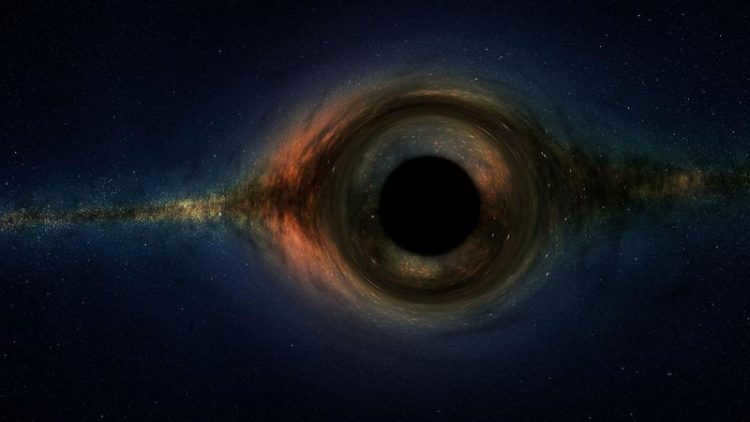
While a black hole may not be directly visible, it can still be detected through the matter that falls into it. Additionally, as stellar gas is drawn towards the black hole, its temperature rises dramatically as it nears the event horizon, causing it to emit a bright glow. This explains why black holes can appear to glow. Thanks to this faint glow, astronomers and astrophysicists can identify the presence of an object with a small volume but immense mass at the center of a galaxy. Currently, approximately 1000 objects exhibiting similar behavior to black holes have been observed.
What led to Hawking’s misconception about black holes?
A recent study conducted by Stephen Hawking has caused quite a controversy, with some media outlets claiming that black holes do not exist. However, this is not an accurate representation of Hawking’s actual claim. Nonetheless, it has become evident that Hawking was mistaken in his assumptions about black holes, as the paradox he sought to prove is no longer considered a paradox.
The crux of the matter lies in the well-known black hole firewall paradox. The defining characteristic of a black hole is its event horizon, which is the point of no return for anything approaching it. According to Einstein’s general theory of relativity, the event horizon represents a region of space and time that is so distorted by gravity that escape becomes impossible. Once you cross the event horizon, you are forever trapped.
The asymmetry of the event horizon has been a persistent issue in comprehending gravitational physics. For instance, the event horizon of a black hole appears to defy the principles of thermodynamics. One of the fundamental tenets of thermodynamics asserts that nothing can possess an absolute zero temperature. Even objects with extremely low temperatures emit some level of heat, yet a black hole absorbs light without emitting any heat. Consequently, the temperature of a black hole is theoretically zero, which is inherently impossible.
In 1974, Stephen Hawking made a groundbreaking discovery regarding black holes and their emission of light. Utilizing the principles of quantum mechanics, Hawking demonstrated that there are inherent limitations in our ability to fully comprehend and measure certain properties of an object. For instance, the precise energy of an object cannot be known with absolute certainty. As a result of this inherent uncertainty, the energy of a system has the potential to spontaneously fluctuate, as long as its average value remains constant.
Applying this concept to black holes, Hawking revealed that near the event horizon – the boundary beyond which nothing can escape the gravitational pull of a black hole – particle pairs can materialize. In this phenomenon, one particle becomes trapped inside the event horizon, causing a slight decrease in the black hole’s mass. Simultaneously, the other particle is able to escape in the form of radiation, effectively carrying away a portion of the black hole’s energy.

Although the problem of black holes was resolved by Hawking radiation, it simultaneously gave rise to another conundrum known as the fire wall paradox. When quantum particles emerge as a pair, they become entangled, signifying that they are interconnected in the realm of quantum mechanics. If one particle becomes trapped within a black hole while the other is expelled, the entanglement between the two is severed. From the perspective of quantum mechanics, one could argue that the pair of particles reverts back to their untainted, initial state, and it appears as though the event horizon disrupts this state.
Last year, it was demonstrated that if Hawking radiation exists in its pure form, then it either cannot emit radiation in the desired direction according to thermodynamics or it would generate a fire wall made up of high-energy particles near the surface of the event horizon. This phenomenon is commonly referred to as the fire wall paradox since, according to the principles of general relativity, observing anything out of the ordinary would not be expected when near the event horizon of a black hole. The fundamental concept of the general theory of relativity, known as the equivalence principle, states that if you are freely falling towards the event horizon, you should not encounter a powerful fire wall comprised of high-energy particles. In his article, Hawking proposed a resolution to this paradox by suggesting that black holes lack event horizons. Instead, they possess apparent horizons that do not necessitate the presence of a fire wall in order to be consistent with thermodynamics. This is why the statement “there are no black holes” has gained popularity in the media.
However, the paradox of the fire wall only arises when considering pure Hawking radiation, a recent study conducted by Sabine Hossenfelder reveals that Hawking radiation is not purely in its original form. Hossenfelder’s research demonstrates that instead of a single entangled particle pair, Hawking radiation is connected to two such pairs. One pair becomes trapped within the confines of the black hole, while the other manages to escape. This process bears similarities to Hawking’s initial proposal, but the particles involved are not in their pure state.
Consequently, there is no longer a paradox. Black holes are capable of emitting light in a manner that aligns with the principles of thermodynamics, and the region surrounding the event horizon lacks the anticipated fire wall as predicted by the general theory of relativity. Ultimately, Hawking’s proposal serves as a resolution to a non-existent problem.
What is the emission of a black hole?
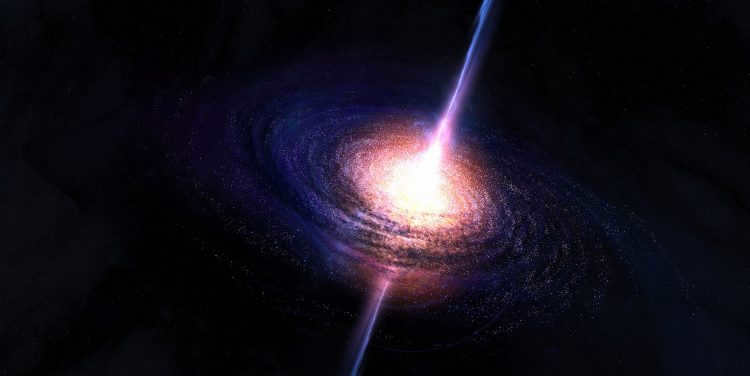
Black holes with low mass exhibit high temperatures. Therefore, the temperature of black holes weighing less than 1017-1016 g exceeds 109-1010 K. In addition to generating the aforementioned particles, these black holes also generate electron-positron pairs. It is important to note that the dimensions of such black holes are merely 10-10 cm, which is 1000 times smaller than the size of an atom.
Observing these particles originating from outer space has the potential to aid in identifying primary black holes. Up until now, primary black holes have not been discovered, and our current understanding suggests that there should be no more than ten thousand black holes with a mass of approximately 1015 g per cubic parsec in the entire Universe. If there were a greater number, the overall quantity of gamma rays with energies of around 100 MeV would surpass the current observed flux of gamma rays emanating from space. While the figure of “ten thousand” may seem substantial, it is crucial to note that the mass of primary black holes is minuscule compared to, for example, the mass of a star.
Instead of thinking about “dreams” (although that is strictly scientific), we could envision a scenario in the far-off future where we are able to create small black holes in space artificially. These black holes could store the energy used in their creation and then emit it gradually, according to a specific rate and energy level of particles, which is determined by the black hole’s mass. For instance, a black hole with a mass of 1015 g would release 1017 erg/s of energy over the course of 10 billion years.
There are still many uncertainties surrounding the newly discovered phenomenon. One question that remains unanswered is whether a black hole completely evaporates or leaves behind a particle with a mass known as Llankov, which is 10-5 g. It is also unclear if we can observe the process of black hole evaporation in the Universe. Furthermore, experiments with black holes in physicist laboratories may seem fantastical at the moment. However, the existing knowledge already challenges our understanding of the evolution of matter in the Universe.
The enigma of black holes’ information paradox
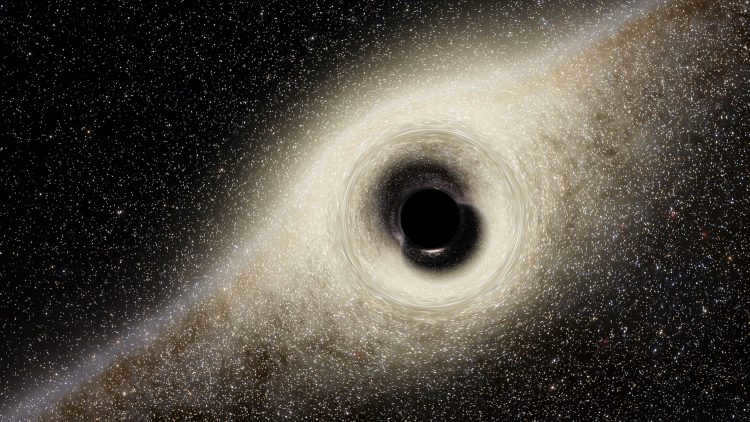
You may have heard about the notion that black holes obliterate information that enters them. Why does this pose such a significant conundrum for physics that scientists are vigorously striving to eliminate this absurd and irrational formulation? Well, the world has become rather complex. Things were more straightforward in my youth. The grass appeared greener, soda had a better taste, and black holes were truly black. In other words, black holes compressed matter and energy into infinitely dense singularities without giving rise to insurmountable contradictions. Those were glorious times.
However, those times have come to an end. Nowadays, black holes encompass a diverse range of shades of gray, progressively bending the laws of physics one by one. So, what exactly is the black hole information paradox?
Let’s start by discussing the concept of information. When physicists refer to “Information,” they are referring to the specific characteristics of each particle in the universe, such as mass, position, spin, temperature, etc. These characteristics serve as a unique identifier for each particle and also determine the probability of their behavior in the universe. Even if you were to manipulate or combine atoms, the quantum wave function that describes them would always persist.
Quantum physics allows for the manipulation of the entire universe’s timeline, as long as you make the necessary conversions in your mathematical calculations, including charge, parity, and time. This is a crucial concept. Brilliant minds assert that information must always endure, much like energy. Just as energy cannot be destroyed, it can only be transformed.
What exactly is a black hole? It occurs when a massive star, with a mass 20 times greater than that of the sun, undergoes a violent collapse and explosion. The density of its matter is incredibly high, with the speed required to escape its gravitational pull exceeding the speed of light. Some particularly fascinating black holes possess an intensely heated accretion disk, in which matter orbits around the black hole’s event horizon. Once matter crosses this boundary, light can no longer escape in any manner.
Additionally, black holes exhibit a peculiar effect of relativity known as time dilation. Consider a clock descending towards a black hole, being drawn into a gravitational well. As it nears the black hole, time will gradually slow down until it ultimately comes to a halt at the event horizon. The photons emitted by the clock will become stretched out, resulting in a redshift in the clock’s color. Eventually, the clock will vanish as the photons stretch beyond the range of our eyes’ detection.
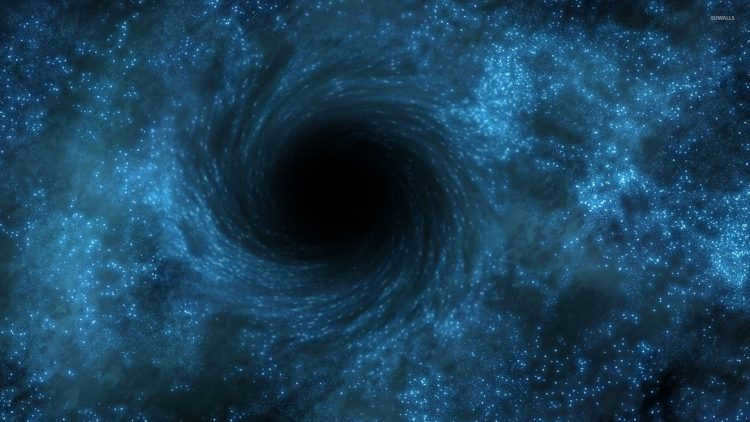
If you were to gaze at a black hole for billions of years, you would eventually witness all the matter and objects that had become trapped inside, clinging to it like Velcro. Within this gravitational prison, you would discover remnants such as a clock and even the Titanic. Moreover, you would theoretically possess the ability to ascertain the quantum state of each individual particle and photon that had been ensnared within the black hole. Since the complete vaporization of everything would require an almost infinite amount of time, this is not a concern.
The information is perpetually preserved on the surface of the black hole. Although everything that enters the black hole is undoubtedly destroyed, their valuable quantum information remains intact.
Pay attention! Only if you possess the ability to unravel the mysterious black hole, will you be able to obtain the quantum information that encompasses everything that has been consumed by the black hole. This was the case in the past, at least.
In the year 1975, Stephen Hawking introduced a groundbreaking revelation regarding black holes. He came to the realization that black holes possess a temperature and, over an extensive period of time, they would gradually evaporate, releasing both mass and energy back into the vast universe. This phenomenon was later known as Hawking radiation.
However, this very concept gave rise to a perplexing paradox. The information regarding what was absorbed by the black hole is preserved through time dilation, yet the black hole itself diminishes in mass as it evaporates. Eventually, it will vanish entirely, leaving the question of where the information will go. This is the kind of information that cannot be annihilated.
Contrary to Hawking’s previous belief, black holes do not completely vaporize.
Instead, the information contained within them somehow escapes through the radiation emitted by Hawking.
Throughout the black hole’s existence, it retains this information until its final moments. When the last two particles evaporate, all of the stored information is suddenly released into the universe.
This information is compressed into the microscopic space that remains after the black hole’s evaporation.
A black hole.
It is uncertain whether physicists will ever fully understand this phenomenon. Recently, Hawking proposed a new idea that may provide a solution to the black hole information paradox. He suggested that the radiation emitted by the black hole could carry information about the new matter being absorbed by it.
Therefore, the escaping radiation stores and releases data on all objects that descend, ultimately resolving the contradiction. However, this is purely speculative as the detection of Hawking radiation remains elusive. It is possible that in the future, we will not only determine if we are on the correct path but also discover the definitive resolution to this enigma.
Occurrences such as these serve as a reminder of our limited understanding of the vast cosmos.
What is Hawking’s solution to the black hole information paradox?

The concept is that black holes possess a mechanism for retaining information that has not yet been acknowledged. This information is stored on the black hole’s horizon and has the potential to cause minuscule shifts in the Hawking radiation. Within these minute shifts, there may be valuable information pertaining to the matter confined within the black hole. The precise intricacies of this process remain unknown at present. Scientists are eagerly awaiting a more comprehensive technical paper authored by Stephen Hawking, Malcom Perry, and Andrew Strominger, which is expected to be released in late September.
Currently, we have established the existence of black holes, understood their locations, formation, and ultimate fate. However, the specifics of where the incoming information flows within them still rank among the most perplexing enigmas of the universe.





